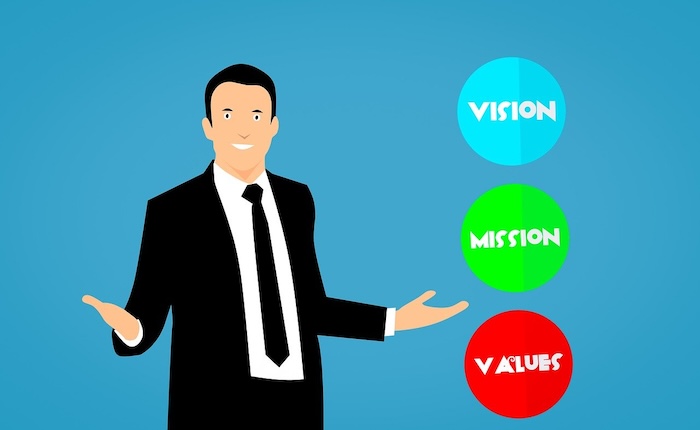The operator mindset is crucial for managing teams, while the CEO mindset focuses on shaping the company’s future. Integrating both mindsets in a company are important. Below you will learn why.
As reported by Forbes on November 6th, 2023 by Joan Ekobena.
Operator and CEO: Embracing A Harmonious Integration of Leadership Mindsets
In the business world, it is widely accepted that long-term success lies in a business owner’s ability to work “on the business” rather than “in the business.” My personal leadership journey has led me to understand that the true challenge and perhaps the opportunity for success isn’t about strictly adhering to one mindset or the other. Instead, it’s about adapting appropriate approaches for each unique situation.
The appropriate approach may, in fact, require harnessing both mindsets simultaneously for remarkable outcomes.
The operator mindset is crucial for managing teams, resolving issues and meeting deadlines, while the CEO mindset focuses on shaping the company’s future relying on market trend analysis, KPI scrutiny, strategic goal setting and long-term decision making.
For example, securing a key contract for our long-term goals brought operational challenges with employee transportation. Embracing the operator mindset led me to immediately assess the situation on-site, proactively solving these hurdles without compromising our strategic vision.
A Case For The Coexistence Of Both Mindsets
However, business uncertainties like market disruptions, rapid changes in technological advancements and global challenges such as the Covid-19 pandemic, often demand a seamless transition between these mindsets.
During the early days of the pandemic, many of us business owners found ourselves deep in the trenches, solving logistical nightmares to keep our businesses afloat—a clear embodiment of the operator mindset. Yet, as things began to settle, we needed to strategize, restructure and reimagine our businesses in a post-pandemic world, demonstrating the CEO mindset.
What’s truly fascinating though, is the realization that these two mindsets aren’t mutually exclusive. They can work together in harmony. This coexistence of leadership mindsets could be a game changer. The human brain, with its parallel processing capabilities, allows for the simultaneous handling of multiple and diverse information streams. This suggests that leaders can also embody both the CEO and operator mindsets concurrently.
Practical Applications Of Parallel Processing
To illustrate the point, let’s look at the practical application of this balanced leadership style:
During a PR mishap, the leader must immediately embody the operator mindset, focusing on taking immediate action to mitigate the damages, such as coordinating with the public relations team, crafting clarifying statements or apologies. Simultaneously, the leader must seamlessly transition into the CEO mindset to contemplate the long-term ramifications of the crisis on brand trust. This could involve strategizing around future reputation management and making strategic adjustments to protect the brand’s integrity and regain public trust.
Consider the scenario of implementing a new home care technology solution, like a remote patient monitoring system. The operator mindset ensures the system’s successful implementation and integration into daily operations. Simultaneously, the CEO mindset assesses how the new technology will align with the long-term goals and vision of the home care agency, including improved patient outcomes, increased operational efficiencies and new market opportunities.
This dual thinking approach allows leaders to address immediate concerns while also keeping an eye on the future, consciously aligning short-term actions with long-term ambitions, thereby nurturing an environment for growth.
Simultaneously balancing the operator and CEO mindsets reduces the lag time between strategy formulation and implementation, often resulting in enhanced efficiency. Consistently aligning short-term actions with long-term visions and goals results in better decision making. Likewise, constantly aligning day-to-day or micro-tasks with macro visions can promote resilience and adaptability in the face of challenges.
Cultivating Dual Thinking
But how do we cultivate this dual thinking approach? Developing this harmonious mindset requires intentional effort:
1. Training And Simulations
Workshops that simulate real-life, high-pressure situations enable leaders to practice making strategic and operational decisions simultaneously, preparing them for potential organizational challenges.
For example, at my company, we’ve introduced tri-annual mock site surveys, initiated following a challenging week-long site survey. These simulations not only prepare us for actual state licensure surveys but also foster training and collaboration among our teams.
2. Mindfulness Practices
Regular periods of reflection and meditation can help leaders become more aware of how their decisions impact the company’s larger goals, allowing them to consciously align their tasks with broader company objectives.
Incorporating mindfulness into the daily workflow of a busy CEO is a deliberate effort. I occasionally step aside to reflect on certain matters, but typically, the last 15 minutes of my lunch are for quiet reflection on and visualization of company goals.
3. Diverse And Collaborative Teams
Encouraging collaboration among team members with varied expertise reduces silos and fosters an environment where strategic thinking and operational tactics naturally intermingle, leading to more comprehensive problem-solving approaches.
In diverse organizations like mine, securing departmental buy-in is essential before fostering collaboration on projects. Also, leveraging standard operating procedures (SOPs) for effective cross-training among departments ensures consistency and fosters a deeper understanding among teams.
While brainstorming from such collaboration can be beneficial, making them mandatory can stifle genuine creativity and make some team members feel pressured.
In conclusion, the shifting dynamics of the business world render the traditional narrative of the operator and CEO mindsets as opposite ends of a spectrum increasingly obsolete. It’s no longer just about choosing between working “on” or “in” our businesses; it’s about mastering the harmony of doing both simultaneously.
Successful modern leaders are recognizing the need for a seamless transition and concurrent embodiment of these diverse mindsets. By embracing the symbiotic nature of these mindsets, leaders can harness a new realm of effectiveness and innovation when dealing with the multifaceted challenges and opportunities of today’s business world.
Additional Leadership Resources
Navigating the Executive Mind: Overcoming Decision Fatigue for CEOs
Leading Through Turbulence: A CEO’s Guide to Effective Conflict Resolution


0 Comments